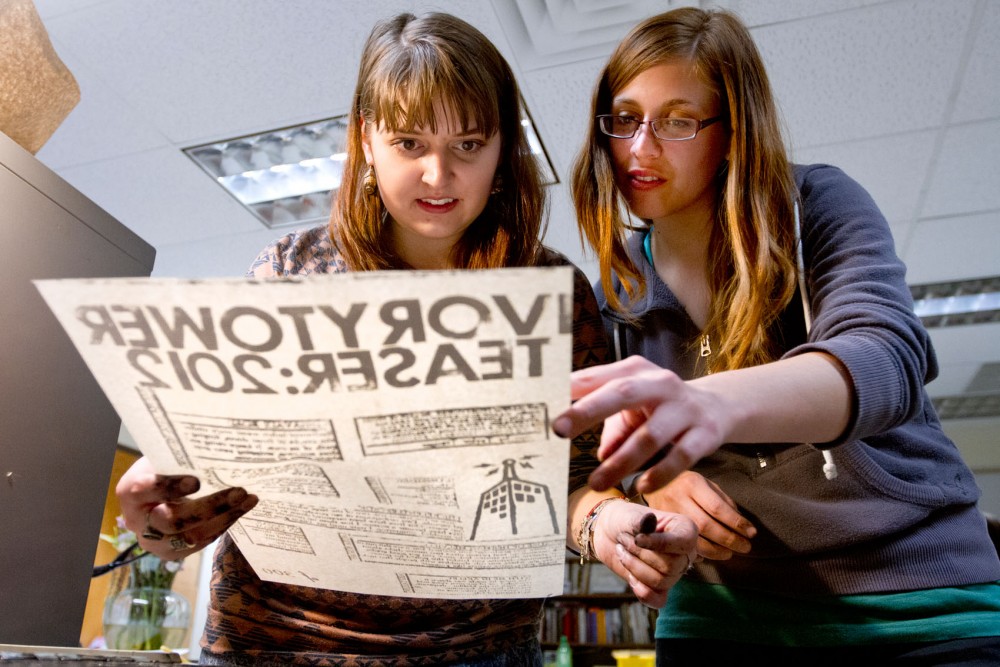You’ve more than likely seen The Ivory Tower around campus, and maybe you’ve already submitted some work of your own.
Produced entirely by students in the English department’s publishing class, the Ivory Tower is an annual magazine that highlights the creative writing of Minnesota’s student body. The students in that class, ENGL 3711, hosted a teaser launch party Wednesday night at the Whole Music Club in Coffman Union. The full launch of this year’s issue will be April 25.
It’s an organization with some deep history: In the 1970s, notable literary alumni such as Garrison Keillor, Patricia Hampl and Lewis Hyde worked on its pages.
“One of our main objectives is to make it more than just a magazine. It’s to have a community conversation with the school,” said co-editor-in-chief Jen Rosenberg.
Indeed, the Ivory Tower goes beyond its physical publication. While the print edition showcases short stories, creative nonfiction, poetry and photography among other print-friendly art forms, Ivory Tower’s web presence allows for music and other multimedia art that simply cannot be expressed on paper.
It’s an opportunity for University of Minnesota students looking to grow in their creative outputs. But the chance to reach out to the nationwide literary audience makes Ivory Tower unique among college-based publications.
For example, when staff members from the Ivory Tower went to the Association of Writers & Writing Programs Conference in Chicago, they were surprised to learn of the publication’s reputation.
“As soon as I would mention Ivory Tower, people — not just from Minnesota — recognized what I was talking about. It is becoming more of a presence in the whole literary world in the U.S.,” Rosenberg said.
Since Ivory Tower limits its submissions to University students, it gives them an even stronger voice in the literary scene.
“Other literary magazines accept submissions worldwide,” said nonfiction editor Taylor Trauger, “so [the Ivory Tower] really creates a community voice. We’re all local here.”
And that sense of community brings a natural unity to the publication.
“My co-editor Hanna [Kjeldbjerg] and I put all the pieces together,” said Rosenberg. “Even before we had it in a cohesive unit, the pieces were connected, and that wouldn’t necessarily happen if it wasn’t limited to our campus.”
The magazine has become more than just a student group at the University. It’s a stepping stone for students looking to get involved in the literary scene beyond the school.
“If you’re here at the U of M, really take advantage of the community we have,” Trauger said. “For example, the Loft Literary Center [in downtown Minneapolis] is the biggest independent literary center in the United States. It’s not connected to a school, and we have it right here.”














